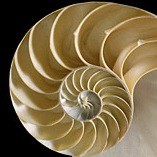A few years ago I published this analysis of Surat Al-Kawthar 108. Surprisingly, I just ran into the same sura analyzed on YouTube in an entirely different way with amazing results!
This video is by Binimad Al-‘Ateeki, who’s done some pretty impressive numerical miracle videos on the Quran, among other things. What’s interesting here is that his video shows us the same sura with some amazing results involving the number ten. Whereas I got what I thought were pretty fascinating results involving the number nine! So how did this happen?
The difference is in the single letter waw. و
Yes, that little comma-like letter. About which a scholarly linguistics article was written entitled “One Waw to Rule Them All…” Here, however, the difference is much simpler. I count it as a separate word per Dr. Abdeldaem Al-Kaheel’s method described in his pdf book on the number 7. (You can download it from the linked site which has a separate pdf link. His website appears in many languages.) Whereas most apps, scholars, and researchers do not count waw as a separate letter, and thus it is often “attached” to the word that comes after it because it is a single letter. Dr. Kaheel explains his logic based on his knowledge of Arabic, and because it resulted in some impressive patterns regarding the number seven, I have used it for years now in my Quranic studies. With some amazing results.
So which method is “the right one?”
My answer is … BOTH may be “right.” How can we get such impressive results using two different methods? Well, notice the title in the linguistics article above. Waw is not just any letter. It means “and” and technically is a conjunction and not a harf garr which refers to prepositions which in Arabic are single letter prefixes that are always attached to the word they refer to. But waw? Nothing says it has to be attached, even though it’s usually printed that way. There are also word prepositions, but these are a special type in Arabic. Waw, however, is the only single-letter conjunction and it appears that the Quran actually uses this very issue to express certain things such as the balance scales, where the waw can be a letter and/or a word.
So it is entirely possible that Allah the Exalted made this Quran in such a way that accommodates multiple ways of looking at the Quran to expose something miraculous in each of them. In this case I found a symmetry involving the number nineteen 19 as well as patterns involving the number 9. But others have found incredible symmetry and patterns involving the number ten 10.
Maybe we can combine the two: 10+9=19.
Something analogous happened when in my passion to prove that the Basmalah must be the first numbered verse of the Quran, I analyzed it by the numbers for each way of looking at it: with the Basmalah numbered and without it. Expecting of course some clear evidence in one over the other. But in fact both were similarly impressive. I didn’t publish the results (in a table) because I still believe the Basmalah should be numbered, with other evidence (the {3,4} set). Nonetheless, I can summarize the results for you: with the Basmalah, prime numbers were dominant. Without it, composite numbers dominated. Among those composite numbers: 114! I like to think the prime numbers “won” but it wasn’t conclusive. In fact, I had to consider it’s almost “a tie.”
Other situations have convinced me that our Creator knows everything and I mean knows everything! Past, present, future… he knows we will look for various kinds of miracles in the Quran, he has incorporated calculations beyond our imagination and details that have meaning and value to far different eras, levels of advancement and knowledge, cultural quirks and linguistic foibles.
There is nothing Allah doesn’t know. On top of that, He somehow incorporates “openings” of choice in which we can change ourselves and even our world, within certain perimeters. There are levels of depth for every individual, each person unique in some ways Allah knows. And the Quran speaks directly to each of us – as if there was no one else in the Universe. Until and unless we somehow refuse – or choose to ignore His signs surrounding us through all of this.
Even the Pharaoh got second chances. The truth is plain to see. But the enemies of truth would have us drown in distractions, arguments, wars and corruption. Every surah, and indeed all creation, is hyper-communicative, showing us a million ways to overcome what would make us forget Allah, truth, beauty, wholeness, what is the ultimate Good. The Quran is after all the Reminder.


